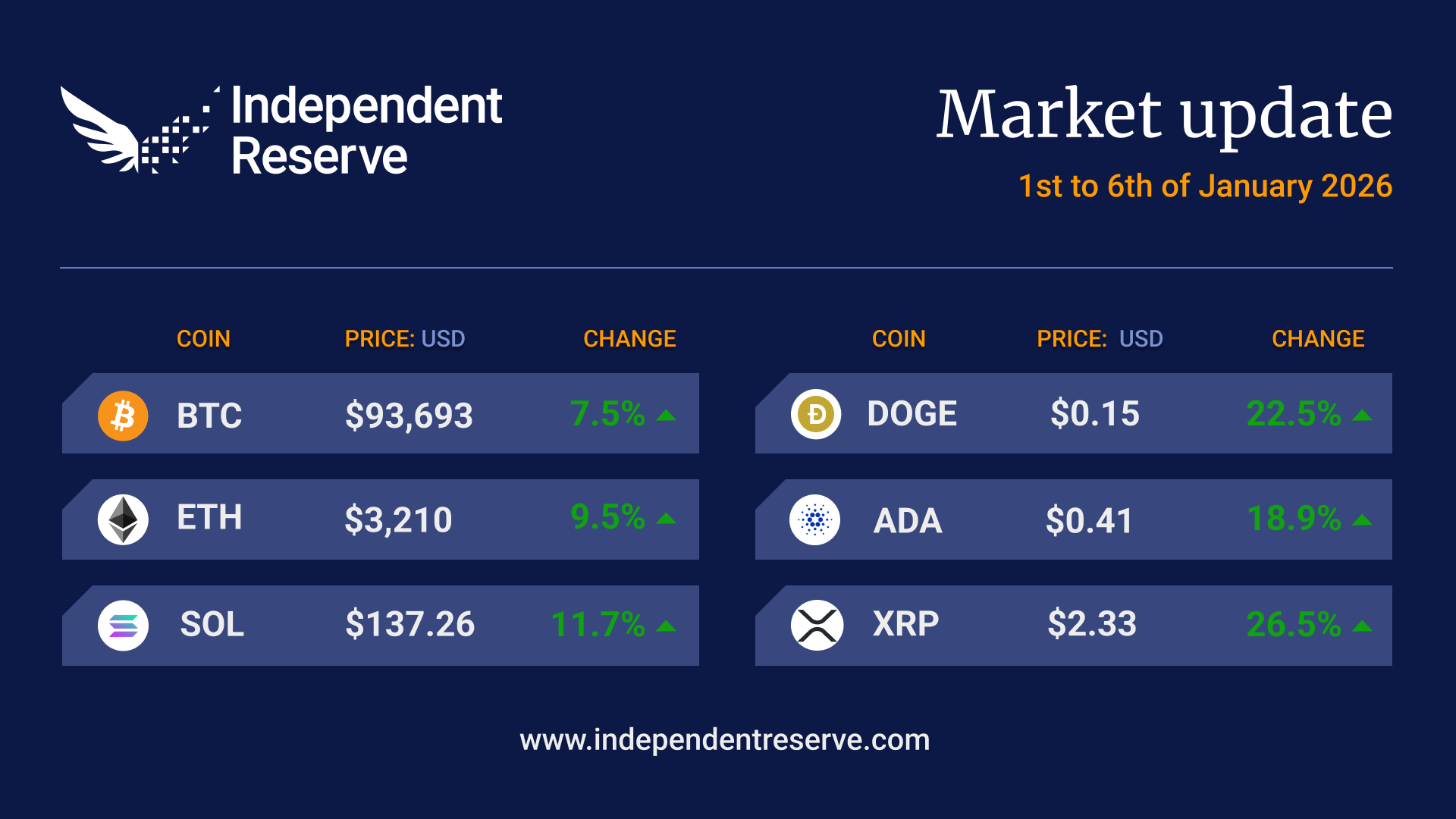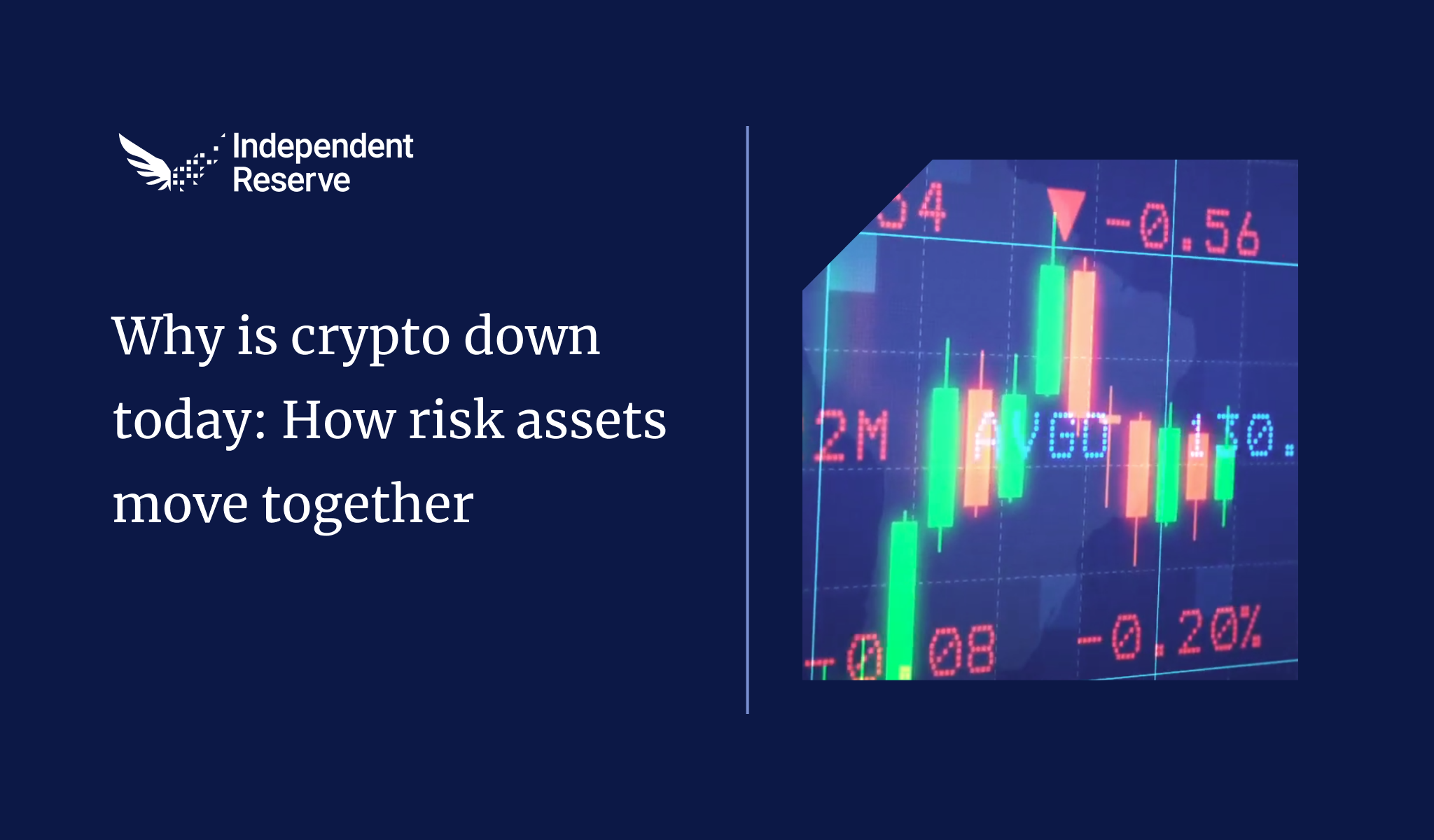In markets
Crypto markets traded sideways again this week, with Bitcoin flat on seven days ago and trading around A$40,550 (US$26,025). Ethereum lost 1.3% and finished the week at A$2,570 (US$1,650). XRP and Cardano were flat, Dogecoin was up 1.4%, while Solana fell 3%. There is some good news, with Bloomberg analysts arguing the recent downtrend in Bitcoin prices is weakening, and the liquidations are “largely behind us” based on a decline in open interest. “As a result, we see limited downside for crypto markets over the near term,” their report stated. However, with the war on crypto in full swing and the US Fed boss Jereme Powell indicating inflation is still too high and that “we are prepared to raise rates further if appropriate” it’s anyone’s guess where markets will go next. Analyst Michael van de Poppe says that nearing 500 days, we’re in “the longest bear market in history for Bitcoin”. The Crypto Fear and Greed Index is at 39 or Fear.

From the OTC desk
Cryptocurrency markets have continued to trade independently of other alternative risk assets. For now, this has resulted in periods of falling volatility, followed by sharp pricing spikes (higher or lower). This week, however, has been a tale of very limited volatility, and a general lack of pricing guidance for the complex.
With front-end US monetary policy remaining somewhat ‘stuck’ at current levels – the Federal Open Market Committee (FOMC) has been consistent in their higher for longer message. The result has maintained the increased cost of holding risk assets. More recently, the lack of cryptocurrency-specific news has caused lower volatility. We expect this to continue as a theme in the near term as the market waits for an update on the US spot BTC ETF approval process.
The key economic events this week include: 1) the Jackson Hole Symposium; and 2) China’s policy response to the Evergrande credit event.
In his speech, titled ‘Inflation: Progress and the Path Ahead’, US FOMC Chair Jerome Powell highlighted:
“…although further unwinding of pandemic-related distortions should continue to put some downward pressure on inflation, restrictive monetary policy will likely play an increasingly important role. Getting inflation sustainably back down to 2 percent is expected to require a period of below-trend economic growth as well as some softening in labour market conditions.”
In China, concerns of a weaker economic landscape have continued. This week, Chinese property giant Evergrande Group returned to trading following a 17-month halt – opening 87% lower. Offshore debt restructuring discussions appear to have been pushed back from the 26th of September meeting date. Watch this space.
Additionally, China has instructed new measures to lift market confidence and slow financial outflows. This included lower stamp duty on stock transactions, buoying both the onshore and Hong Kong exchanges. This week, China delivers NBS PMI data for the period of August, which will provide key insight into current economic activity.
Economic data in focus this week includes: the AU Monthly CPI Indicator for July (Wednesday 11:30am AEST); US Jolts Job Openings for July (Wednesday 12:00am AEST); US PCE Price Index for July (Thursday 10:30pm AEST); US employment data for August (Friday 10:30pm AEST).
On the OTC desk, a lack of volatility in AUD/USD has seen a drop in stable coin flow. While we continue to be very active in converting USDT/AUD, this has lightened. In the majors, BTC has seen better sellers than buyers; ETH flow has remained more balanced, however. Interestingly for the cryptocurrency complex, alternative L1 tokens continue to vary with market volatility. In periods of low volatility, the majors as well as boutique smaller market cap tokens have become of interest to accumulate in general. Layer 1s appear to be a more liquid, high beta play for a more volatile market.
For any further information, please feel free to reach out.
In headlines
Join Independent Reserve Singapore CEO
Lasanka Perera, CEO of Independent Reserve Singapore, will take the stage at Venture & Capital Investor Conference as a panellist to discuss digital asset investment trends. His expertise in leading Independent Reserve Singapore to become a leading crypto exchange in APAC, and the first crypto exchange licensed by the Monetary Authority of Singapore (MAS), makes him a valuable voice in the world of cryptocurrency investments. The conference will be at Marina Bay Sands on Thursday, 31 August 2023.
Independent Reserve adds PayPal
Independent Reserve has become the first Australian exchange to integrate PayPal as a funding option. That means that customers can transfer up to $5,000 per week via PayPal, which can be funded with a standard bank account or directly via credit/debit card. Users no longer need to leave the IR site to make deposits. The news of the innovative payment method – in light of the recent limits imposed by Australian banks on payments to crypto exchanges – generated headlines from Stockhead to the Australian Financial Review and Cointelegraph. CEO, Adrian Przelozny told Stockhead, “Our aim is to enable easy and secure access to the cryptocurrency market for a broad range of investors… Adding PayPal as an option for deposits, as well as card processing via the PayPal platform, is a tremendous leap towards making crypto a mainstream asset.”

New front in war on crypto
The latest salvo in the US war on crypto comes from the US Treasury Department which has proposed tax reporting and KYC obligations that would apply to DeFi protocols and browser wallets. While the provisions as they apply to centralised exchanges and payment processors aren’t that unusual — requiring brokers to report any sales and exchanges — the way a “broker” is defined appears to capture DeFi projects like Curve, Uniswap and even Metamask. Miners have been exempted from the proposals, and the industry will be lobbying hard to get DeFi platforms exempted too. Chairman of the House Financial Services Committee, Patrick McHenry, said: “The notice of proposed rulemaking on digital asset reporting requirements is another front in the Biden Administration’s ongoing attack on the digital asset ecosystem,” and called for the administration to “work with Congress to finally deliver clear rules of the road for this industry.” But some DeFi founders are giving up on the US, with dYdX founder Antonio Juliano suggesting, “Crypto builders should just give up serving US customers for now and try to re-enter in 5-10 years… Most of the market is overseas anyways.” The industry has until October 30 to raise objections ahead of public hearings on November 7 and 8.
Hong Kong crypto hub
One of Hong Kong’s first licensed cryptocurrency exchanges, HashKey, has officially started accepting retail investors who want to trade Bitcoin and Ethereum with US dollars, with Hong Kong dollar trading to be allowed within a week or two. HashKey and OSL, the only two local exchanges previously licensed to serve professional investors, saw their licences upgraded to retail a month ago.
NFTs can be securities now
The SEC has charged LA-based media company Impact Theory over selling unregistered securities in the form of NFTs. It said the company raised US$30 million (A$46.6M) in late 2021 through the sale of Founder’s Keys NFTs and encouraged investors to view them as investments in “the next Disney.” In a settlement, the company agreed to pay US$6.1 million (A9.48M) in penalties but did not admit fault. Pro-crypto SEC commissioners Hester Peirce and Mark Uyed wrote a dissenting report.

Too many Bitcoin miners?
The Bitcoin hashrate is at record highs, but the amount of revenue per terahash is at new record lows. That may be why Finbold reports that 16 Bitcoin mining companies have recorded US$4.47 billion (A$6.95B) in losses over the past 12 months. The biggest loser was Core Scientific which racked up US$1.66 billion (A$2.58B) in losses, while the only miner out of the 16 industry leaders to make a profit was Canaan Inc with US$92.33 million (A$143M). According to Cambridge University, on August 27, the average cost to mine one Bitcoin was US$45,877 (A$71.3K), but the spot price was US$26K (A40.4K).
Tether mining
A badly photoshopped Tether Energy logo on a photograph of a Bitcoin mining container caused a big stir among Tether truthers on the weekend, leading to theories the company’s entire mining operation was fake. Paolo Ardoino, chief technology officer, explained the marketing guys had slapped the logo on for branding reasons, but the real containers don’t have a logo for operational security reasons. He also wouldn’t say where the mining equipment was located, meaning you’ll just have to trust him… or not.
Ethereum layer 2s growing
Bloomberg’s Jamie Coutts reports that the Ethereum ecosystem is growing fast despite the bear market, with “active addresses across L1 + L2s reaching an ATH of 1.97 million.” Figures from GrowThePie.xyz are even higher, suggesting that 2.3 million unique addresses interacted on Ethereum’s layer 2 networks alone last week. zkSYnc Era led the pack with 900K weekly users, followed by Arbitrum (475K) and the OP Mainnet (247K). Coinbase’s house Layer 2 called BASE, has grown fast thanks to the buzzy crypto social media app Friend.tech, and BASE had 200K users in the last week. However, Friend.tech’s buyers, sellers, inflows and transactions have fallen off a cliff in recent days, so the hype appears to have been short-lived.
Mystery whale revealed
The mystery whale that amassed US$3 billion (A$4.7B) of Bitcoin in three months was not BlackRock hoarding Bitcoin before its ETF launches as the rumour mill suggested, but Robinhood. Arkham Intelligence labelled the wallet — now the third largest Bitcoin wallet — as Robinhood: Jump Trading Custody.
Until next week, Happy Trading!


